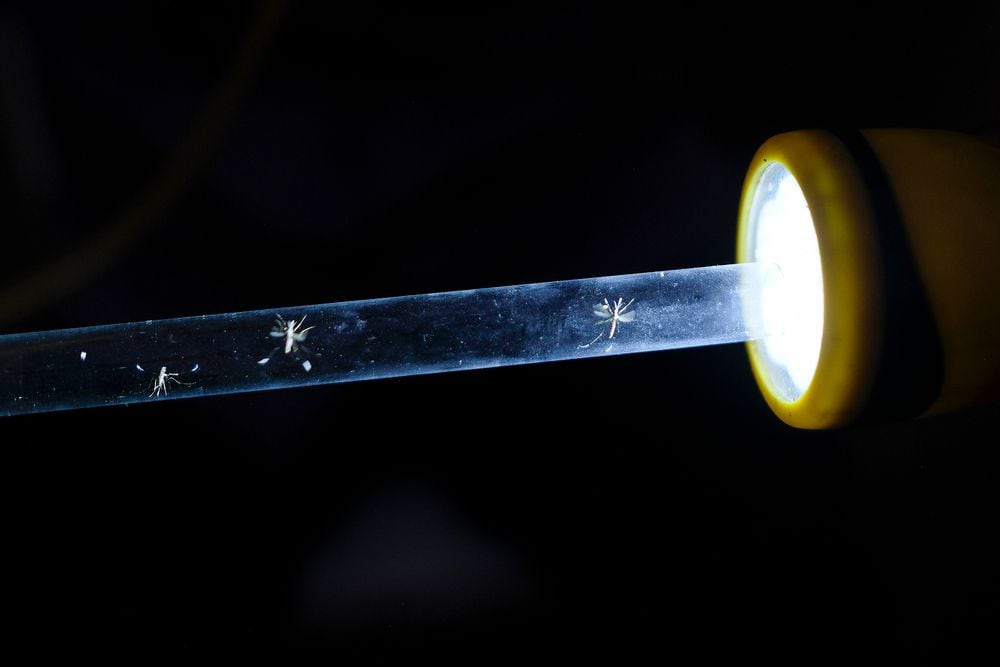
Countries around the world are beginning to lift restrictions that were first imposed in 2020 to slow the spread of COVID-19, including rules governing travel, socialization, wearing masks, and self-isolation. Driven by declining infection rates and studies suggesting that the disease caused by the Omicron variant of SARS-CoV-2 is less severe, politicians where that variant is dominant are relaxing the rules that were introduced to address the pandemic.
Despite the positive signs, experts warn that declaring the end of the pandemic remains a dubious proposition, given the proven surprise capacity of SARS-CoV-2. Even so, society is closer than ever to labeling COVID-19 endemic, when the combination of natural infection and vaccination provides enough protection for the virus to become part of the public health landscape along with many other ailments, some fatal, such as tuberculosis and measles, and less so, such as the common cold.
“In 1918, a flu pandemic began that ended up killing more people than the First World War. This is the example of pandemics, as serious as they can be. But over time, it ended up becoming the seasonal flu that appears every year. When a virus spreads through society, we protect ourselves with vaccines and exposure. Subsequent waves may be less severe, which can lead to a stable endemic disease,” William Hanage, epidemiologist and associate professor at Harvard's TH Chan School of Public Health, said in dialogue with The Harvard Gazette.
Even so, for the specialist, “to say that a disease is' endemic 'is just to say something about whether or not there are major epidemics, large outbreaks. It doesn't mean that a disease is harmless, because you can have an endemic disease that continues all the time and that kills a lot of people.” To give an example of this, Hanage said: “Tuberculosis is endemic in much of the world and kills millions of people. Malaria is an equally deadly killer, and yet it is considered endemic.”

“The coronavirus is not going to go away; it will become endemic and it will be like a flu.” More words, words less, is what specialists explain since the beginning of the pandemic every time someone consults them about the future of the virus that stopped the world.
By endemicity, experts explain that it means that the virus will continue to circulate in parts of the world's population for years, but its prevalence and impact will be reduced to relatively manageable levels, so it will end up more like a flu than a disease that stops the world.
For an infectious disease to be classified in the endemic phase, the rate of infections must stabilize more or less over the years, rather than showing large and unexpected peaks as COVID-19 did during these two years. “A disease is endemic if the reproductive number is stable at one,” explained Eleanor Murray, an epidemiologist at Boston University. “That means that an infected person, on average, infects another person.”
What the specialist refers to is R0, an indicator that is used to estimate how many people an infected person infects and, according to those in the know, “we are nowhere near that at the moment”. The highly contagious Omicron variant demonstrates that each infected person is infecting more than one person, with the result that cases are increasing worldwide.
Ernesto Resnik is a scientist, molecular biologist, immunologist and biotechnologist based in Minnesota, United States, and he had explained this to Infobae: “This is when the pandemic is when the past, the present and the future are coexisting: the wave of infections, variants and vaccines that work, and endemic COVID-19 on the horizon. But we are neither in the past nor in the future. The present is complex but hopeful.” For him, “although it may not seem today, thanks to vaccines, he is moving to the endemic phase, the phase in which the virus will exist, there will be contagions, but it will not turn our lives upside down”.

In the same vein, the researcher virologist at Stony Brook State University, in New York, Jerónimo Cello, said, for whom a virus becomes endemic when its circulation begins to decrease and the symptoms are milder. “We are going to endemicity, because we have a vaccine and there has been a lot of infection that generates natural immunity, which will lead to less transmission, hospitalizations and deaths. But the virus will continue to circulate. If you look historically, many respiratory virus pandemics start with high lethality, transit and end up in endemic circulation, some with outbreaks.”
At this point, in Resnik's opinion, “this peak of contagion will pass”. “I believe that in 2022 we will make the transition from pandemic to endemic safer. I think that in 2023 we will start to return to normal,” he predicted. “We are on our way to endemic, the virus will not go away, it will continue to be and we are going to get sick. But it will be a mild illness. I estimate that with these variants, so ultra-contagious, essentially everyone will be infected, surely at some point in their lives in the next two years, but the disease will be much milder,” he insisted. We saw this with colds. We're on our way to that. There will be antivirals, so the solution will be even better. We are going to be on our way to reduce the circulation of the virus, so we will encounter the virus once in a while annually, not like now that you are out on the street and the virus is there. Until the virus goes into circulation and we are much calmer, we already know what we need to do is to ventilate the environments well indoors. And of course, vaccination, vaccination and vaccination. It's what's going to keep us healthy on this wave.”
On whether Omicron pushes endemicity further into the future, or could accelerate the path to endemicity by infecting so much population so rapidly that a layer of natural immunity develops more rapidly, virologist at the University of Saskatchewan in Canada Angela Rasmussen said that “that's really the million-dollar question.” “It's really hard to say right now,” said the expert, for whom “in general, a virus becomes endemic when health experts, government agencies and the public collectively decide that they agree to accept the level of impact that the virus has; in other words, it is no longer a active crisis”.
For her, with the rise of Ómicron right now and many governments re-imposing stricter precautions as a result, it is clear that the world is still in crisis mode. “But much depends on the burden it will place on the health care system,” said Rasmussen. And that's going to be different from one community to another.”

And while at this point, for many, the increase in cases caused by the new variant, although mostly mild, could lead to the collapse of the health system, for others there are some encouraging data to take into account. For Joshua Michaud, associate director of global health policy at the Kaiser Family Foundation, “The incredible number of infections is boosting immunity at the level of the population. That will be crucial in terms of silencing future waves.”
For his part, the emergency officer of the World Health Organization (WHO) warned earlier this year that the fact that COVID-19 ceases to be a pandemic and becomes endemic does not make it less dangerous. “People oppose the pandemic with endemic, but endemic malaria kills hundreds of thousands of people, HIV is endemic, violence is endemic in our cities,” Michael Ryan said at a remote colloquium organized by the World Economic Forum (WEF). “Endemic in itself doesn't mean it's good, endemic just means it's always there,” he added.
“We won't get rid of the virus this year,” the doctor warned. “We may never eradicate the virus. Viruses that cause pandemics are often part of the ecosystem. What we can end is a public health emergency of international concern,” he explained, saying that it was necessary to “achieve the lowest possible incidence rate with the maximum number of vaccines so that no one has to die.” “That will be the end of the emergency and that will be the end of the pandemic,” he concluded. The head of the organization also raised the possibility that in the future three or four injections will be considered as the normal number of doses to escape the most severe forms of COVID-19.
“In the future, COVID-19 is going to be one of those diseases that we live with and we also work very hard to minimize its serious consequences for humans and the health system, and we must be prepared to continue the battle against SARS-CoV-2 not only in the coming months, but also in the future. It depends on the people. It all depends on us,” Hanage concluded.
KEEP READING:
Últimas Noticias
Debanhi Escobar: they secured the motel where she was found lifeless in a cistern
Members of the Specialized Prosecutor's Office in Nuevo León secured the Nueva Castilla Motel as part of the investigations into the case

The oldest person in the world died at the age of 119
Kane Tanaka lived in Japan. She was born six months earlier than George Orwell, the same year that the Wright brothers first flew, and Marie Curie became the first woman to win a Nobel Prize

Macabre find in CDMX: they left a body bagged and tied in a taxi
The body was left in the back seats of the car. It was covered with black bags and tied with industrial tape
The eagles of America will face Manchester City in a duel of legends. Here are the details
The top Mexican football champion will play a match with Pep Guardiola's squad in the Lone Star Cup

Why is it good to bring dogs out to know the world when they are puppies
A so-called protection against the spread of diseases threatens the integral development of dogs


